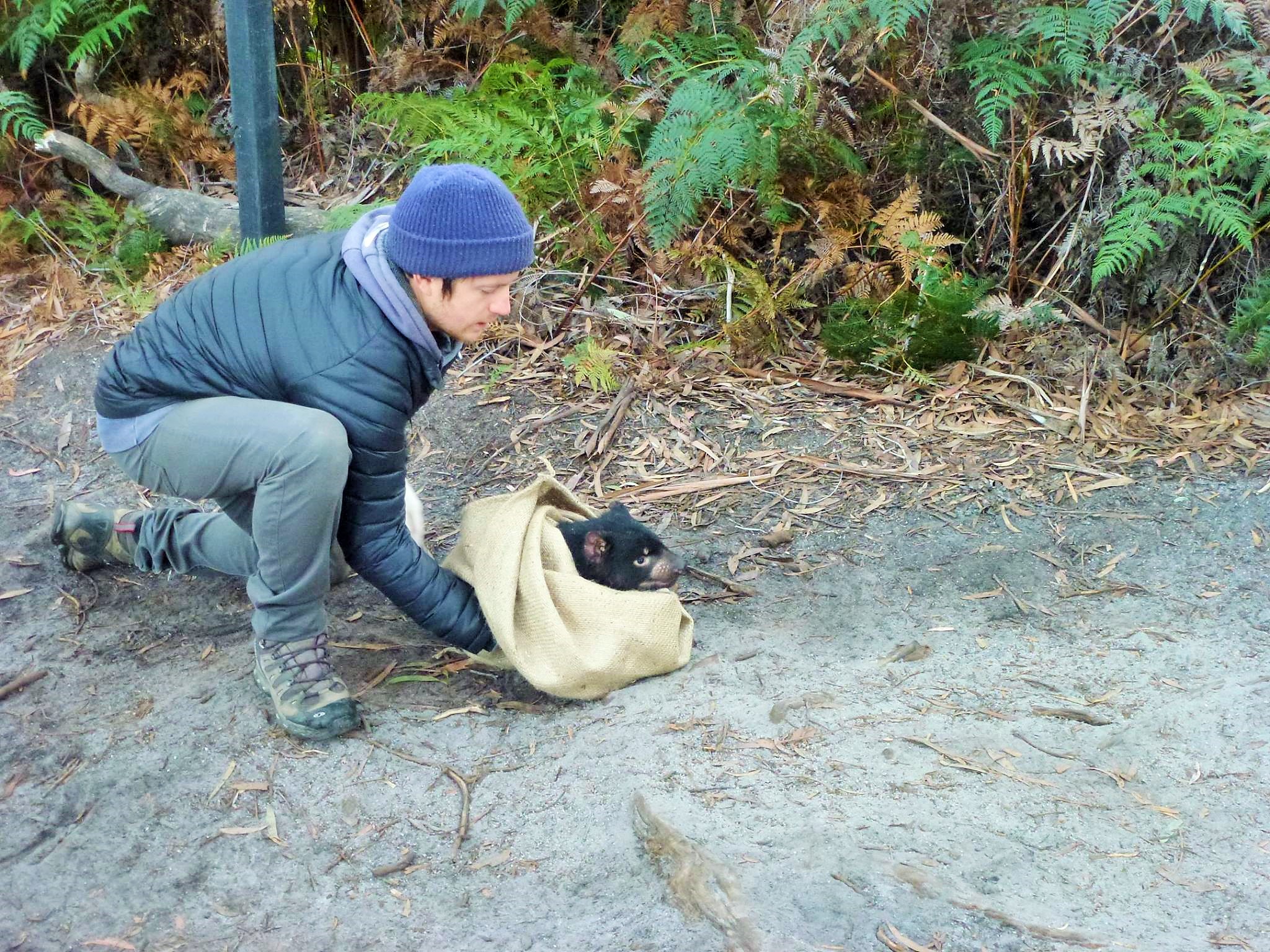
New research published recently in the journal Ecology Letters has estimated just 17,000 Tasmanian devils remain in the wild, a significant decline since the estimated peak of 53,000 in 1996, when the deadly facial tumour disease was first identified and that has since ravaged the species.
Wildlife ecologist and lead author Calum Cunningham, from the University of Tasmania’s School of Biological Sciences, said DFTD had spread across devils’ geographic range, but the factors influencing the spread were less well understood, and it was also uncertain how many devils remained in the wild.
“In this paper we traced the spread of DFTD across Tasmania and put numbers on the total size of the devil population, which was a deceptively difficult task. This work involved almost 2000 nights of trapping devils and was the result of a huge team effort,” Cunningham said.
Scientists analysed multiple streams of data that included spotlight counts and trapping records from the last 35 years, revealing the staggering wave of population declines as the disease moved across Tasmania. Cunningham said there were some glimmers of hope however as this sharp decline was predicted to level off within the next decade.
“We showed DFTD spread rapidly across eastern Tasmania as it moved through areas with high devil densities. The spread slowed significantly from the mid-2000s when the disease-front reached areas of western Tasmania with lower devil densities, but the outlook for devils is better than it was a decade ago with no monitored populations going locally extinct, and modelling that suggests a slowing in decline, and numbers expected to plateau within the next 10 years.”
While signs were encouraging co-author Menna Jones, also from UTAS School of Biological Sciences, stressed devils remained much rarer than they once were, and no longer played important ecological roles like consuming carrion and suppressing cat numbers.
“Based on this lower risk of imminent extinction, we have time to allow devils to recover themselves. We suggest a management focus that facilitates and does not impede the evolution of natural resistance to DFTD. This could include selecting resistant devils and moving these beneficial genomes to other areas. We caution that the species isn’t out of the woods yet, and we need to do all we can to reduce other sources of mortality, like vehicle collisions,” Jones said.
Anne Layton-Bennett

